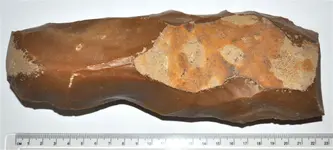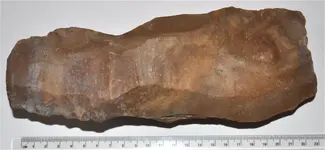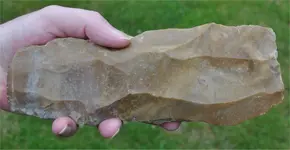I found this flint core in the mid 90s in Central Missouri. It is my largest flint core and shows lots flakes already removed, they are removed all around it except for the cortex on the bottom. I placed a quarter on top for size reference.

Upvote
19








